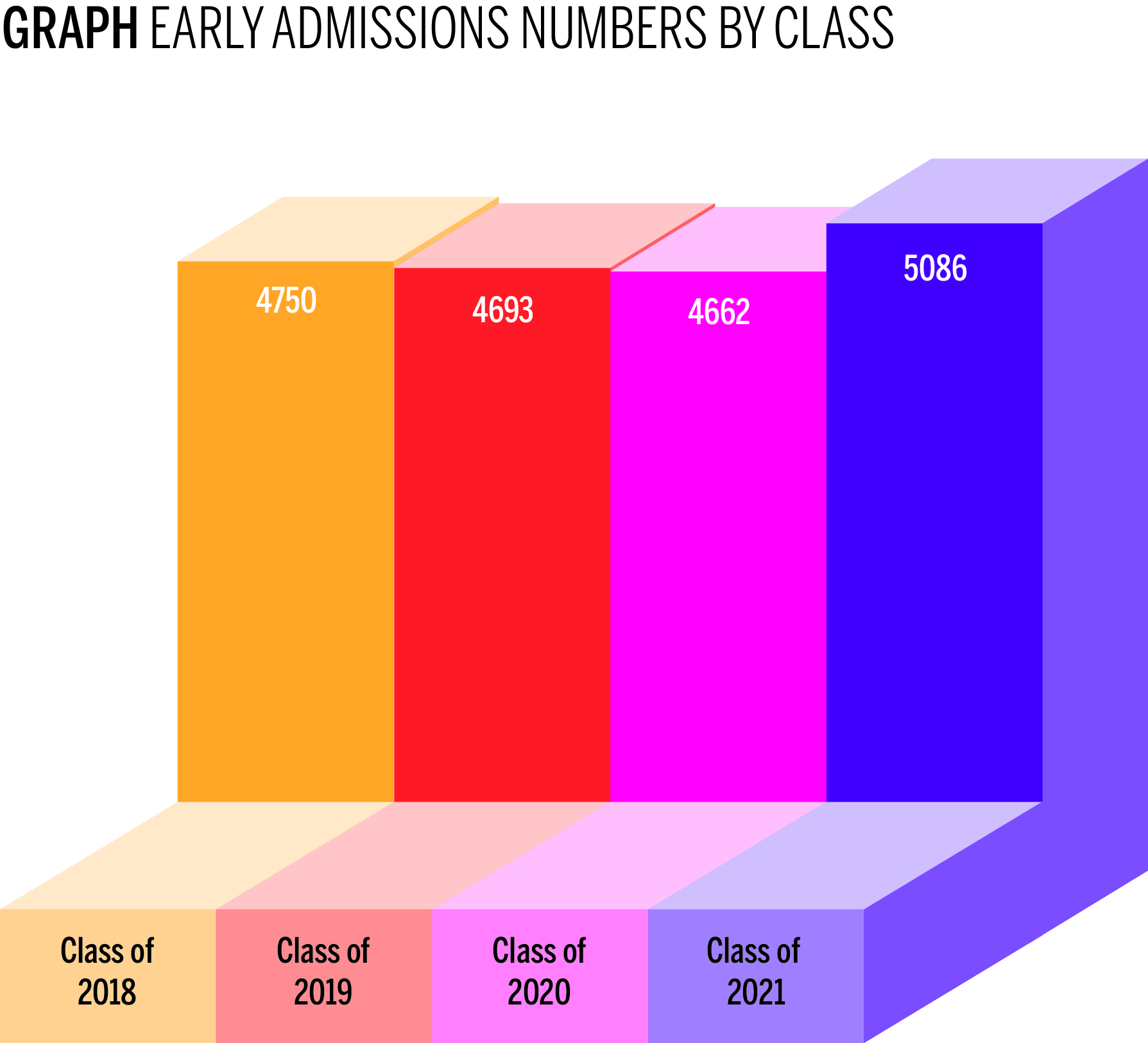
The number of early action applications to Yale College this fall increased by 9 percent, marking a major spike after three years of stagnation.
The Office of Undergraduate Admissions announced Monday that it received 5,086 student applications through the single-choice early action program to the freshman class of 2021. The increase over last year’s early action pool represents a major break from the trend of the last three years, in which early application numbers hovered around 4,700 applicants. This uptick coincides with the gradual expansion of Yale College, set to begin this year with the largest-ever freshman class, composed of roughly 1,550 students.
Dean of Undergraduate Admissions Jeremiah Quinlan said that although the early action pool only gives a glimpse into what the overall pool will eventually look like, he was encouraged by the strength and diversity of the early applicants. Quinlan added that he is especially excited by the prospect of offering more students spots in the freshman class.
“This year’s single-choice early action pool shows a continuation of many positive trends we have seen for several years now,” Quinlan said. “As it has grown, the applicant pool has also become increasingly diverse, with a larger proportion of applications coming from students who identify with backgrounds that have been historically underrepresented at Yale and in higher education generally.”
According to Director of Outreach and Recruitment Mark Dunn ’07, early applications increased across “virtually every subgroup of applicants” that the admissions office tracks. The growth of these subgroups — which includes underrepresented racial and ethnic groups, international students and first-generation students — outpaced the overall rise in applications. This continues an application trend seen last year with increased socioeconomic and geographic diversity in Yale’s early application pool.
Despite the rise in applications, Dunn emphasized that Yale’s outreach efforts were not intended to increase the number of applicants, but to improve the diversity and quality of the application pool.
Dunn was hesitant to link Yale’s targeted outreach to underrepresented groups with the increased diversity of the early application pool. Still, he said outreach efforts — including mailing campaigns aimed at high-achieving low-income students, an ambassadorial program for students from disadvantaged socioeconomic backgrounds and an annual Multicultural Open House — potentially influenced the number of applications Yale received this fall.
“In all of our outreach efforts, we strive to put the authentic experience of real Yale students front and center,” Dunn said. “I think this strategy has been successful in helping students from all backgrounds imagine themselves thriving at Yale.”
Dunn noted that the Admissions Office plans to put together a full press release about the QuestBridge National College Match program in December.
However, it is unclear what caused this year’s surge in early applications. Olivia Facini ’19 speculated that the increase in early applications could reflect the fact that students are becoming more comfortable applying early action to Yale.
Although the Admissions Office states on its website that the higher acceptance rate for early applicants reflects the strength of the early action pool relative to regular decision applicants, Facini said this higher acceptance rate may be becoming more widely noted, encouraging students to apply early.
High school seniors from all 50 states, the District of Columbia, Puerto Rico and 91 foreign countries applied early this year, according to the Admissions Office.







